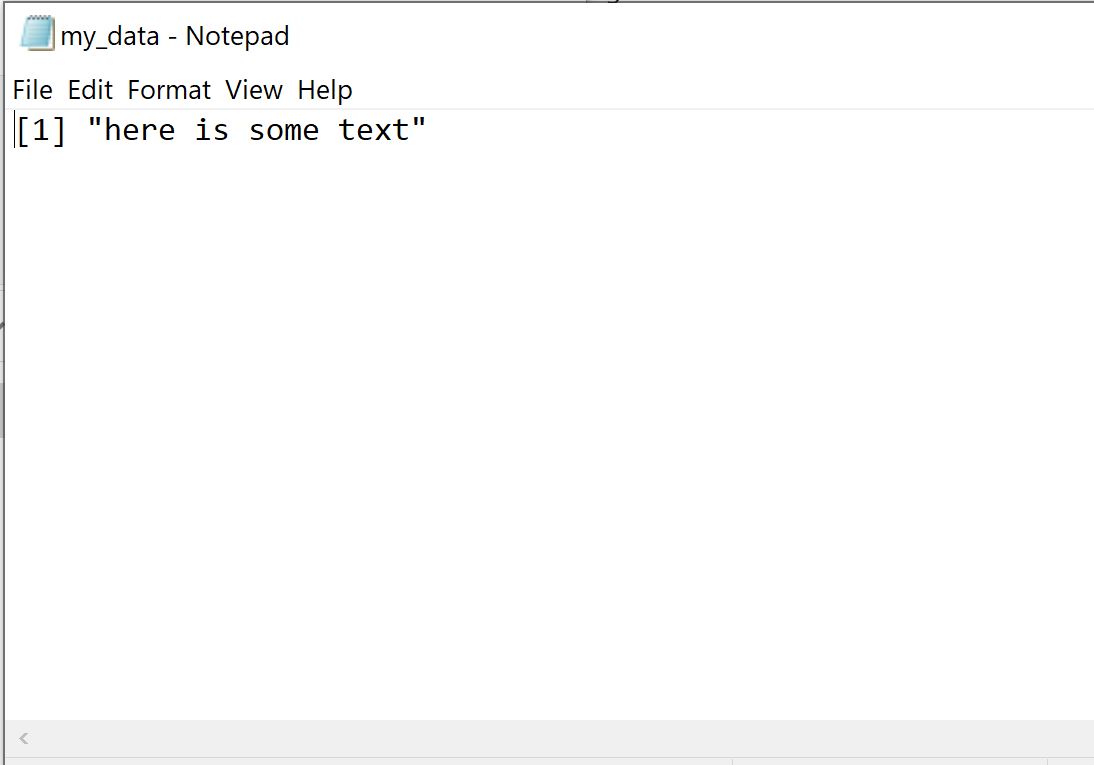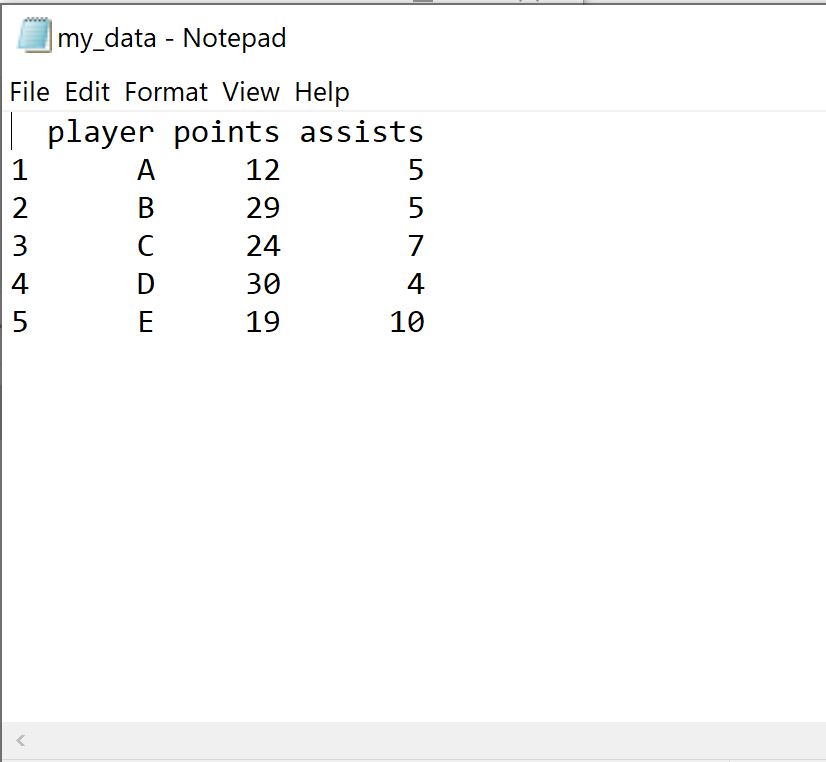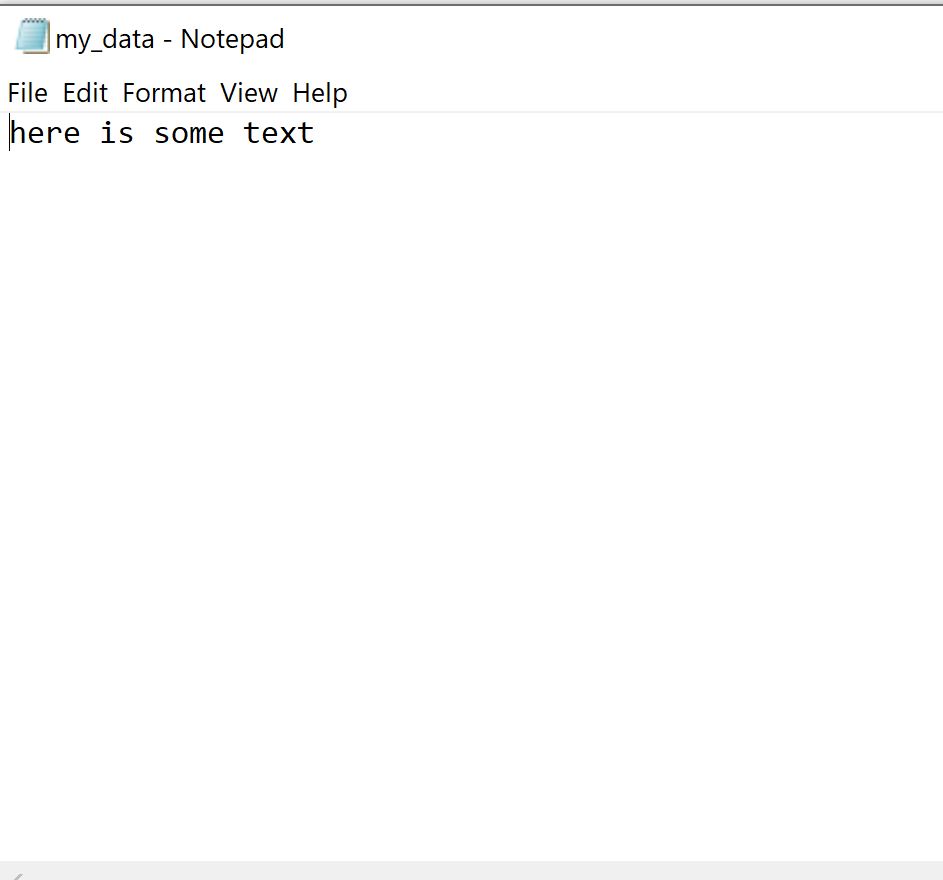如何将 r 输出保存到文本文件(带有示例)
将 R 输出保存到文本文件有两种常见方法:
方法 1:使用 Sink() 函数
#define file name
sink(" my_data.txt ")
#write this string to file
"here is some text"
#close the external connection
sink()
方法2:使用cat()函数
#write string to file
cat(" here is some text ", file = " my_data.txt ")
以下示例展示了如何在实践中使用每种方法。
示例 1:使用 Sink() 将 R 输出保存到文本文件
我们可以使用以下Sink()函数将字符串导出到文本文件:
#define file name
sink(" my_data.txt ")
#write this string to file
"here is some text"
#close the external connection
sink()
然后我们可以导航到当前工作目录并打开文本文件:

该文件包含我们指定的字符串。
我们还可以使用cat()函数将更复杂的内容(例如数据块)导出到文本文件:
#define file name
sink(" my_data.txt ")
#define data frame to write to file
df <- data. frame (player=c('A', 'B', 'C', 'D', 'E'),
dots=c(12, 29, 24, 30, 19),
assists=c(5, 5, 7, 4, 10))
print (df)
#close the external connection
sink()
然后我们可以导航到当前工作目录并打开文本文件:

该文件包含我们创建的数据框。
示例 2:使用 cat() 将 R 输出保存到文本文件
我们可以使用以下cat()函数将字符串保存到文本文件中:
#save string to text file
cat(" here is some text ", file = " my_data.txt ")
然后我们可以导航到当前工作目录并打开文本文件:

该文本文件包含我们指定的字符串。
请注意,与Sink()函数不同, cat()函数在文本文件中不包含任何 R 控制台行号。
请随意使用适合您需求的功能。
其他资源
以下教程解释了如何在 R 中执行其他常见任务: